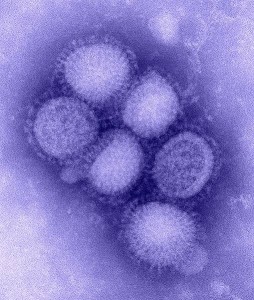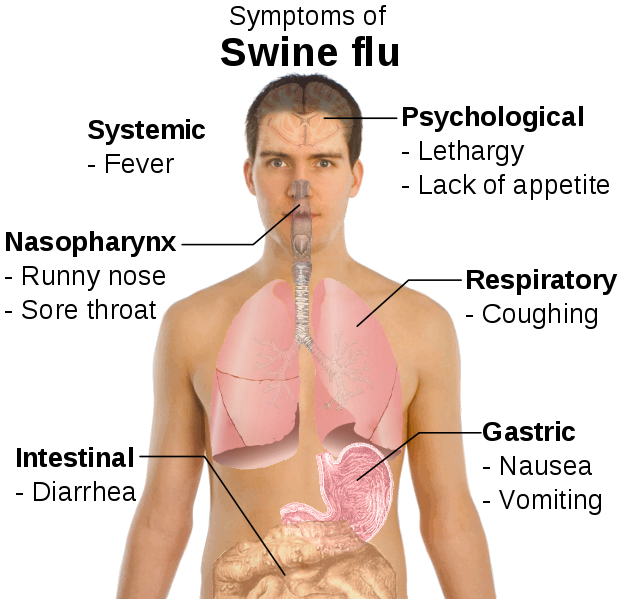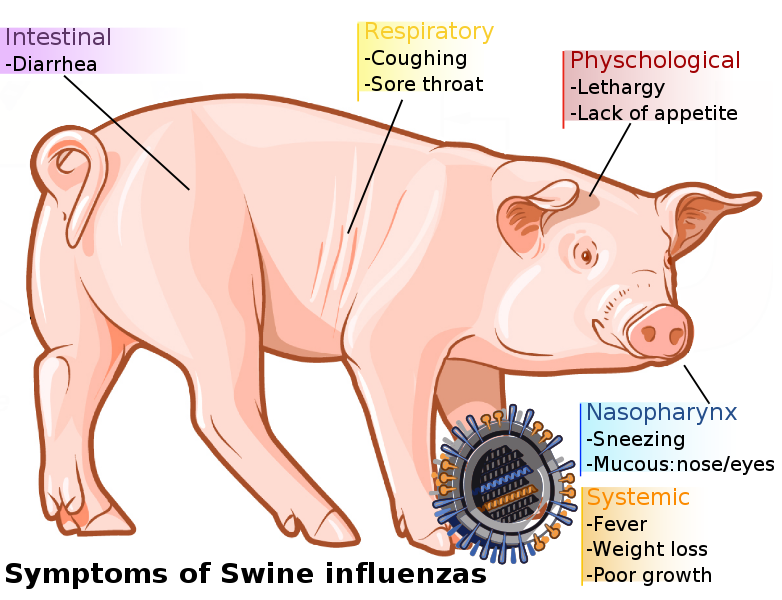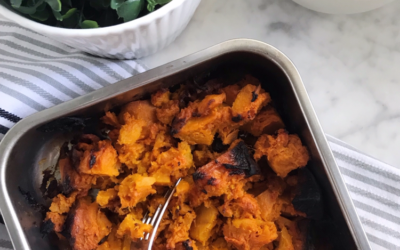![]()
by Randy Baker, M.D.

Many people are concerned about the H1N1 influenza strain, popularly
called the swine flu. Because this is a strain few people are immune to,
it will likely spread more than the typical flu, and might affect 1/3 or
more of the population (of interest, the elderly are more likely to be
immune and thus less likely to become ill). However, this flu strain is
not any more serious than the typical seasonal flu, and there is growing
evidence that it is generally milder than typical seasonal flu.
While
some people unfortunately die from influenza each year, most fatalities
are in those with serious chronic illness. It is rare for a generally
healthy person to die from influenza. Of interest, while the CDC states
that 36,000 people die in the US from influenza each year, the data shows
that the number is actually about 1,300 (according to one source) or even under 1,000 according to Dr. Joseph Mercola.
Many steps can be taken to prevent influenza. A widely-used
strategy is the flu vaccine. The H1N1 strain did not appear until
this year’s seasonal vaccine was already in production, so
there are 2 vaccines this year, the regular seasonal vaccine and
one for H1N1. Until recently, I strongly advised against the swine flu vaccine due to plans to add squalene to the vaccine in an attempt to make it more potent.
Squalene has the potential to trigger serious autoimmune disease.
Fortunately, significant public awareness was raised about this
hazard (largely due to the efforts of Dr. Joseph Mercola), leading many to
plan to refuse the vaccine, leading the manufacturers to recently announce
that it would not be added in the US.
While I still have some concerns about the safety of this vaccine, they are far less if it is squalene-free. Remaining concerns include the presence of thimerosal, a mercury-containing preservative found in most of the injectable flu vaccines, and the fact that a certain percentage (5-10%) of vaccines are contaminated with viruses and bacteria such as mycoplasma. Thimerosal is a very dangerous toxin. Patients with Lyme disease and other chronic illness often suffer from mercury toxicity and have genetic deficiencies in their ability to detoxify mercury, making them especially susceptible to being harmed by thimerosal-containing vaccines.
The inhaled FluMist vaccine does not contain thimerosal but does have a live virus and is contraindicated in immunocompromised patients (exactly those who might benefit from being vaccinated). Most of the seasonal and H1N1 vaccines come in multi-dose vials which contain thimerosal. A small fraction comes in individual vials that do not have thimerosal, and while highly preferable, this type can be hard to find.
If someone in fragile health is really concerned about getting influenza and can find influenza vaccine that does not contain thimerosal it might be reasonable to consider the vaccine. However, this is based on the supposition that influenza vaccine is actually effective, and there is good reason to question this as discussed below.

An outspoken critic of vaccines is Dr. Mercola. You can go to his
popular web site mercola.com to read his latest take on the vaccine and
alternatives.
Also of interest, 12 of 13 Canadian provinces recently suspended giving the seasonal flu vaccine due to research showing that people who got the annual flu vaccine last year had twice the chance of getting the H1N1 strain this year(!).
This calls into question the safety and efficacy of flu vaccines. A review of research by mainstream scientists with impeccable credentials suggests that the influenza vaccine is not particularly safe and effective for either adults or children. An excellent recent article on this can be found at theatlantic.com. Quoting from this article:
“THE HISTORY OF FLU VACCINATION suggests other reasons to doubt claims that it dramatically reduces mortality. In 2004, for example, vaccine production fell behind, causing a 40 percent drop in immunization rates. Yet mortality did not rise. In addition, vaccine “mismatches” occurred in 1968 and 1997: in both years, the vaccine that had been produced in the summer protected against one set of viruses, but come winter, a different set was circulating. In effect, nobody was vaccinated. Yet death rates from all causes, including flu and the various illnesses it can exacerbate, did not budge. Sumit Majumdar, a physician and researcher at the University of Alberta, in Canada, offers another historical observation: rising rates of vaccination of the elderly over the past two decades have not coincided with a lower overall mortality rate. In 1989, only 15 percent of people over age 65 in the U.S. and Canada were vaccinated against flu. Today, more than 65 percent are immunized. Yet death rates among the elderly during flu season have increased rather than decreased.”
Related articles are at medicalnewstoday.com and jpands.org (PDF download).
There is evidence that elderly people in extended care facilities have significantly less deaths from pneumonia if they get flu vaccine, so it is reasonable for that population to consider getting vaccinated (please note, however, that these people did not have less deaths from influenza itself, but from the secondary complication of pneumonia). I do not recommend children and adults in good general health get influenza vaccine.
As for patients with Lyme disease, I would recommend avoiding FluMist and the injectable vaccines containing thimerosal. I would also be cautious about the injectable vaccines that are thimerosal-free, as they could still have deleterious effects and may not be particularly beneficial. There are many safe and natural alternatives to preventing and treating influenza as detailed below.

There are many other ways to prevent the flu. Research shows that
people with low blood levels of Vitamin D have a significantly
greater chance of getting influenza. Experts advise 5,000 units of
Vitamin D during fall and winter to boost immunity.
A nice collection of articles related to Vitamin D and influenza can be found at vitamindcouncil.org.
Other good immune boosters include zinc (15-30 mg/day), Vitamin A (10,000-25,000 units/day, ideally form a fish source), and Vitamin C (1,000-2,000 mg 2x/day). Andrographis, a wonderful herb, can reduce chances of getting colds and flu by 50% (200 mg 5 days a week or 400 mg 3 days a week).
Avoiding contact with sick people, frequent hand washing, and eating a healthy diet while minimizing sugar, alcohol and fried foods are all likely to help. Reducing stress and maintaining a positive attitude also boosts immunity.
A homeopathic preparation made from influenza virus, Influenzinum, is claimed to act like a vaccine. Research needs to confirm this, but many homeopaths have found it effective in their practices and it seems reasonable to try.
If one gets influenza, homeopathy can be the best treatment. It was documented to be remarkably effective during the 1918 pandemic. It is documented that in the 1918 pandemic up to 30% of patients seeking conventional care died. However, it is important to note that there is absolutely no evidence that the new H1N1 strain is anywhere nearly as virulent, and almost all of the deaths were not directly from influenza but from secondary pneumonia. This was before the discovery of antibiotics, and undoubtedly western medicine today is much better able to successfully treat pneumonia.
However, during the 1918 pandemic it was documented that those treated with homeopathy had dramatically better outcomes. The following is an extract from an article entitled “Homeopathy In Influenza- A Chorus Of Fifty In Harmony” by W. A. Dewey, MD that appeared in the Journal of the American Institute of Homeopathy in 1920 (thanks to Julian Winston and David Warkentin for this).
“Dean W. A. Pearson of Philadelphia collected 26,795 cases of influenza treated by homeopathic physicians with a mortality of 1.05%, while the average old school mortality is 30%.
Thirty physicians in Connecticut responded to my request for data. They reported 6,602 cases with 55 deaths, which is less than 1%.
In the
transport service I had 81 cases on the way over. All recovered and were
landed. Every man received homeopathic treatment. One ship lost 31 on the
way.
-H. A. Roberts, MD
Derby, Connecticut
In a plant of 8,000 workers we had only one death. The patients were not
drugged to death. Gelsemium was practically the only remedy used. We used
no aspirin and no vaccines.
-Frank Wieland, MD
Chicago
I did not lose a single case of influenza; my death rate in the pneumonias
was 2.1%. The salycilates, including aspirin and quinine, were almost the
sole standbys of the old school and it was a common thing to hear them
speaking of losing 60% of their pneumonias.
-Dudley A. Williams, MD
Providence, Rhode Island
Fifteen hundred cases were reported at the Homeopathic Medical Society of
the District of Columbia with but fifteen deaths. Recoveries in the
National Homeopathic Hospital were 100%.
-E. F. Sappington, M. D.
Philadelphia
I have treated 1,000 cases of influenza. I have the records to show my
work. I have no losses. Please give all credit to homeopathy and none to
the Scotch-Irish-American!
-T. A. McCann, MD
Dayton, Ohio
We treated over 300 cases of influenza among the members of the Student
Army Training Corps with no deaths. Gelsemium, Bryonia and Ferrum
phosporicum were the leading remedies. Only in those cases having had
aspirin was convalescence delayed and pneumonia produced.
-C.B.Stouffer, M.D
Ann Arbor
One physician in a Pittsburgh hospital asked a nurse if she knew any
better than what he was doing, because he was losing so many cases. “Yes,
Doctor, stop Aspirin and go down to a homeopathic pharmacy, and get
homeopathic remedies.” The Doctor replied; “But that is homeopathy.” “I
know it, but the homeopathic doctors for whom I have nursed have not lost
a single case.”
-W.F.Edmundson, M.D
Pittsburgh
Three hundred and fifty cases were treated and I only lost one.
-Cora Smith King, M.D
Washington D.C
Eleven men reported 3,600 cases with 6 deaths. My records show 750 cases
with one death. Gelsemium, Bryonia and Eupatorium were the remedies
chiefly.
-F.A. Swartwout, M.D
Washington D.C.
In the Public Health service in New Mexico among the Mexican population
chiefly Veratrum viride, Gelsemium and Bryonia were introduced and
excellent results followed their use in influenza. No cases died under
homeopathic medication.
–
E. Fisher, M.D
Chicago”

Epidemics tend to have a single remedy that helps most
patients. Homeopaths have found several remedies helpful thus
far for swine flu and there is not yet a consensus if one is the
best for most cases. Homeopaths seem to be having the greatest success
with Arsenicum album, Belladonna and Eupatorium perfoliatum. It might be
a good idea to get all 3 to have on hand. A good summary of how to choose
an appropriate remedy is here: homeopathic.com/articles/view,93.
If a consensus on a remedy good for most cases develops, I will post it on my website, drrandy.org.
At the first sign of the flu I would take Oscillococcinum (a homeopathic remedy proven effective for flu) or a more specific remedy based on symptoms. I advise Vit. C 2,000 mg every 1-2 hours until loose stools (then lesser amounts). I advise elderberry extract (Sambucol, or Immunity Take Care by New Chapter, also called DART Immune by NewMark), Lomatium and Andrographis (400 mg 3x/day). Boneset tea can also be helpful. I like a product called Wellness Herbal Resistance Liquid from Source Naturals that has echinacea, goldenseal, elderberry, the Chinese formula Yin Chiao, boneset, Isatis and other useful herbs.
John Cannell MD has found that taking 900 units of Vit. D per pound of weight for 3 days to be a highly effective treatment. This means a 200 pound person would take 180,000 units a day for 3 days, truly a megadose. Such doses are toxic if taken long-term, but appear safe if limited to 3 days: medicalnewstoday.com/articles/51913.php
Vitamin A can also help, up to 250,000 units of a fish-based source, for up to 5 days. This dose can be toxic taken for prolonged periods, but is safe to take for a few days.
Rest and adequate fluids are essential. Chicken soup contains mucopolysaccharides which boost immune function (if you try this an organic chicken is preferred).
I advise avoiding aspirin, acetaminophen (Tylenol) and other drugs that lower fever; fever is an essential component of our immune response, and taking these drugs undermines our defenses. I also advise avoiding Tamiflu. To quote Joseph Mercola: “Why on earth would anyone want to take a drug that has a chance of killing you, was banned in Japan, is loaded with side effects that mimic the flu itself, costs over $100, and AT BEST can only provide 36 hours of SYMPTOM relief. Just doesn’t make any sense.” More from Dr. Mercola on this subject can be found at articles.mercola.com/sites/articles/archive/2009/04/28/Swine-Flu.aspx.
Even if one takes nothing, they will likely fully recover from the flu within a week or 2. Taking appropriate homeopathics, vitamins and herbs can dramatically reduce the severity of symptoms and duration of illness while preventing complications such as secondary infections.
If we do get the flu, it forces us to slow down and can be a good work-out for the immune system, giving us natural immunity to the flu for years to come. Having the flu helps our bodies to detoxify, and helps us to appreciate what a blessing it is to enjoy good health, something best not taken for granted.











0 Comments